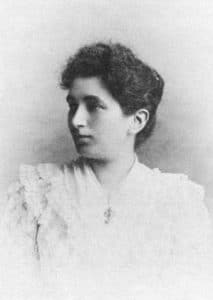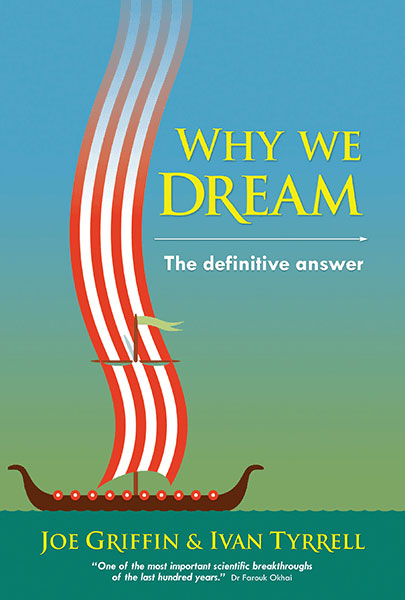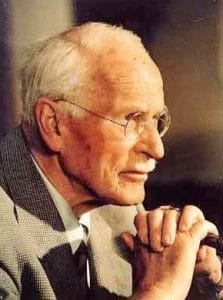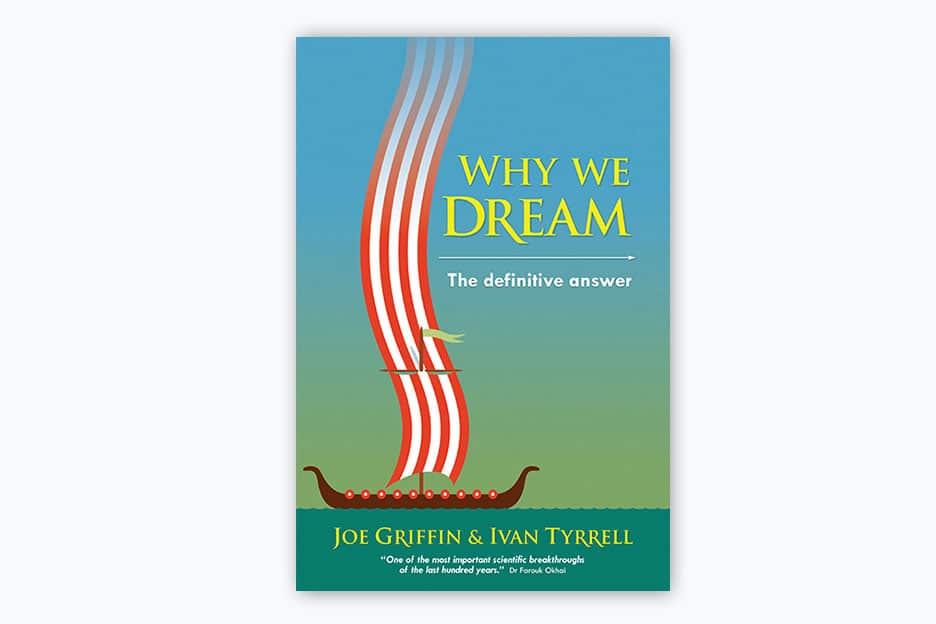Why Freud and Jung were wrong about dreaming: The seminal dreams of Freud and Jung reinterpreted
Freud’s whole system of psychoanalysis, which for a hundred years dominated people’s thinking about psychotherapy, is based upon his dream theory. Not only that, much cultural thinking, fiction and poetry in the Western world has been deeply influenced by psychoanalytical ideas. So, if Freud’s interpretation of this dream is not correct, the whole of psychoanalysis disintegrates and so do many of the Western cultural studies of the past hundred years. As we shall see, Freud’s interpretation was hopelessly wrong.
The dream known as ‘The dream of Irma’s injection’ is the key dream sequence in Freud’s book The Interpretation of Dreams.1 Freud had this dream on the night of 23rd–24th July 1895. He regarded it, and his interpretation of it, as so significant that he called it his ‘specimen dream’ and devoted some fourteen pages to its analysis. He even wrote to his close friend Wilhelm Fliess on 12th June 1900, “Do you suppose that some day a marble tablet will be placed on the house, inscribed with these words: ‘In this house, on July 24th 1895, the secret of dreams was revealed to Dr Sigmund Freud’?”2
It has been possible to unravel Freud’s dream because, fortunately, the relevant historical evidence about the traumatic events in his life during the months preceding it, and the reactivation of concerns about these events by the remarks of a visiting friend on the evening before, are available to us. This evidence provides the key to understanding his dream in the light of Joe’s findings about the purpose of dreams. And, as we shall see, this explanation is far removed from the one arrived at by Freud himself. His dream was, in fact, a precise metaphorical re-enactment of specific historical events in his life that were still troubling him greatly. The dream was described by him as follows:
The dream of Irma’s injection
A large hall – numerous guests, whom we were receiving – among them was Irma. I at once took her on one side, as though to answer her letter and to reproach her for not having accepted my solution yet. I said to her: If you still get pains it’s really your own fault! She replied: if only you knew what pains I’ve got in my throat and stomach – it’s choking me – I was alarmed and looked at her. She looked pale and puffy. I thought to myself that after all I must be missing some organic troubles. I took her to the window and looked down her throat, and she showed signs of recalcitrance like women with artificial dentures. I thought to myself that there was really no need for her to do that – she then opened her mouth properly and on the right I found a big white patch: at another place I saw extensive whitish grey scabs upon remarkable curly structures which were evidently modelled on the turbinal bones of the nose – I at once called Dr M and he repeated the examination and confirmed it. Dr M looked quite different from usual, he was very pale, he walked with a limp and his chin was clean shaven … My friend Otto was now standing beside her as well, and my friend Leopold was percussing her through her bodice saying: She has a dull area low down on the left. He also indicated that a portion of the skin on the left shoulder was infiltrated (I noticed this as he did), in spite of her dress … M said “there’s no doubt about it, it’s an infection, but no matter, dysentery will supervene and the toxin will be eliminated” … We were directly aware, too, of the origin of the infection. Not long before, when she was feeling unwell, my friend Otto had given her an injection of a preparation of propyl propyls, … propionic acid … trimethylamin (and I saw before me the formula for this printed in heavy type) … Injections of that sort ought not to be made so thoughtlessly … and probably the syringe had not been clean.
From Freud’s discussion of the background to the dream, which on first inspection appears to be about one of his patients, Irma, we know that, on the previous day, he had received a visit from an old friend who was also the family paediatrician, Dr Oskar Rie. Earlier in his career Rie had been Freud’s assistant and collaborated with him on a scientific paper. In the dream of Irma’s injection Freud calls him Otto. That evening Rie had come directly from Irma’s home where he had been staying with her and her family. Freud asked him how Irma was and he replied, “she’s better but not quite well”. Freud was annoyed by his reply as he fancied that he detected a reproof in it to the effect that he (Freud) had promised the patient too much. He gave no indication to Rie of his feelings but that night he worked late, writing out her case history to give to Dr M (subsequently identified as Dr Josef Breuer, a senior colleague and a collaborator with Freud on a book about hysteria).
In The Interpretation of Dreams Freud proceeds to give lengthy associations for each element in the dream and, finally, concludes that the main instigating force for the dream was a wish to exonerate himself from any blame for the lack of complete success in the treatment of Irma’s condition. This is achieved by (a) blaming Irma herself for not accepting his solution, (b) pointing out that, because the pains were organic in nature, they were not treatable by psychological means, and (c) implying that Otto had caused the pains by giving her an injection with a dirty needle. These reasons are not, however, as Freud himself noted, mutually applicable. The dream also gave him his revenge on Otto, by making Otto responsible for Irma’s condition.
Now that we are aware that all the elements in a dream stand for something else, with the exception of when someone’s presence is felt but not perceived, we can conclude that Freud’s explanation for the dream, based as it is on the manifest characters, is wrong. Furthermore, since the publication in 1966 of a paper by Max Schur 3 in which previously unpublished letters from Freud to Wilhelm Fliess were included, we have had available the means to identify with some certainty the true meaning of Freud’s specimen dream.
We learn from these letters that, in March 1895, Freud had treated a young, single woman of 27, Emma Eckstein, for hysterical nose bleeds. He had called in his friend Fliess, a nose and throat specialist, to examine her to see if there was a somatic basis to her illness. Fliess had not only operated on Freud himself but was also, at this time, Freud’s major confidant and had expressed complete confidence in Freud’s theories. Fliess travelled from Berlin to Vienna to examine Emma and operated on her nose on the 4th March. (Fliess had propounded a bizarre theory that the turbinal bones in the nose and the female sexual organs were intimately connected and that somatic symptoms, allegedly arising from masturbation, could be cured through nasal surgery.) Freud subsequently wrote to Fliess telling him that the swelling and bleeding hadn’t let up and that a foetid odour had set in. He went on to say that he had called in another surgeon, G [Dr Gersuny], who inserted a tube to help the drainage.

Four days later he wrote again to Fliess telling him that profuse bleeding had started again and, as Dr G was unavailable, he had called in surgeon R [Dr Rosanes] to examine Emma. While cleaning the area surrounding the opening, Rosanes began to pull at a thread and suddenly at least half a metre of gauze came away from the cavity. This was followed by profuse bleeding. It turned out that Fliess had left a piece of iodoform gauze in the cavity some two weeks earlier, which was interfering with the healing process and was the source of the foetid smell. Freud went on to say that leaving in the gauze was an unfortunate accident that could have happened to the most careful surgeon and he reassured Fliess of his complete confidence in him.
On 28th March 1895 he again wrote to Fliess reassuring him about Emma’s condition but, by 11th April, he was writing once more telling Fliess that Emma’s condition had deteriorated, that there was a further highly dangerous haemorrhage, that these were “gloomy times, unbelievably gloomy … the demoralization resulting from the obvious medical helplessness, and the whole air of danger”, and that he was “really quite shaken that such a misfortune can have arisen from this operation, which was depicted as harmless.”
On 20th April Freud replied to a letter from Fliess, telling him that his (Fliess’s) suggestion that they could have waited was completely impractical. Indeed, if the surgeon had sat around and waited, Emma would have “bled to death in half a minute”. However, he goes on to reassure Fliess that he remains for him “the prototype of the man in whose hands one confidently entrusts one’s life and that of one’s family”. These traumatic events occurred just some four months prior to the Irma dream of the night of 23rd July 1895. As we can see from his letters, these were profoundly anxious times for Freud. A patient was in danger of losing her life as a result of a mistake made by a surgeon he had recommended, who also happened to be (at that time) his closest friend. Freud’s confidence was badly shaken.
Indeed, we may well suspect that it was because of these traumatic events that he was so sensitive to what he felt was an implied rebuke in his old friend Rie’s remark about Irma’s treatment. No doubt his reaction, to stay up late to write out her case history in order to justify himself, also helped to bring back in full force to his mind these traumatic events. In fact, as Schur noted when he published Freud’s letters to Fliess, there were many resemblances between the traumatic events recounted in the letters and Freud’s dream of ‘Irma’s injection’. However, without the benefit of the theory Joe has now put forward, he was, perhaps, unlikely to make the full structural comparison necessary to show that the dream of ‘Irma’s injection’ is actually a precise analogical restatement of the traumatic events of Emma’s treatment. It is a re-enacted metaphorical scenario of those events, with Freud’s introspected views about Fliess’s blame made abundantly clear to everyone, including Fliess.
The setting for the dream is a party that was to be held the following day to celebrate his wife’s birthday. Among the guests is Irma, who Freud takes aside to rebuke for not having accepted his solution. Freud tells us that Irma (a name used by Freud to protect the patient’s identity) was a young widow and a friend of the family. In 1984 Jeffrey Masson produced evidence from a number of sources which identify Irma as Anna Hammerschlag, a young widow whose husband had died a year after their marriage, and who was the god- mother of Freud’s daughter Anna.4 She was briefly treated by Freud at this time. This manifest dream character of Irma-Anna was an analogical replacement for Emma Eckstein, as will become clear.

Both Irma-Anna and Emma were referred by Freud to Fliess for nasal examination. Fliess, as we have seen, recommended and carried out nasal surgery on Emma Eckstein to remove the turbinate bone in her nose, with near fatal consequences. Fliess, who was at that time an inexperienced surgeon, advocated this entirely unnecessary operation on the grounds that it would help her recover from what his theory said were the harmful effects of masturbation. (Fliess’s theory had rightly been dismissed by the scientific community of the day as “disgusting gobbledygook”.5 Nevertheless, Freud believed for several years that it was “a fundamental biological discovery”.6) After the operation, Fliess returned to Berlin. No doubt Freud was irritated, as in the dream, when even after the operation she still complained of somatic symptoms. When he examined Irma in the dream, she showed signs of “recalcitrance”; in his letter to Fliess of the 4th March 1895, he told him that he had encountered from Emma “resistance to irrigation”.
The throat in the dream is, of course, an analogy for the nose. This is made quite clear in the dream when Freud looked down ‘Irma’s’ throat and saw structures similar to the turbinal bones of the nose. Freud goes on to tell us that, in the dream, his examination revealed “a big white patch” and “whitish grey scabs” upon these structures, i.e. the operation site. He at once called in Dr M [Dr Breuer], a senior colleague of his, who confirmed his examination. This parallels the events recounted to Fliess in his letter of 4th March 1895, where he said that, because of the pain and swelling, he had let himself be persuaded to call in Dr G [Dr Gersuny], who said that access to the cavity was restricted and inserted a rubber tube to help drainage.
Freud notes that, in the dream, Dr M did not have his usual appearance but possessed the physical characteristics of Freud’s older half brother. In his letter of 8th March, Freud told Fliess that Dr G had behaved in a rather rejecting way towards him during his visit. This explains why the character in the dream standing for Dr G is a composite of Dr M and Freud’s half brother – both of them, Freud tells us in his associations to the dream, had recently rejected a suggestion that he had put to them.
We are next told that Otto was standing beside the patient. Otto [Dr Oskar Rie] is the analogical replacement for Fliess in the dream. It’s not surprising that Otto should have been Fliess’s analogical substitute, as both men were friends of Freud, both were doctors, both had a professional relationship with him and his family, and both had been involved in Freud’s theoretical work.
After the visit of Dr G – represented by Dr M in the dream – Freud wrote a series of letters to Fliess, making him aware of each step in the developing crisis. We can see therefore, how, in a metaphorical sense, Fliess was standing beside the patient. It is entirely in keeping with this view that Otto in the dream doesn’t do anything from this point, except observe what is going on.
Next in the dream sequence, we learn that Freud’s friend Leopold is examining Irma. In Freud’s letter of 8th March 1895 we learn that he had to call in a Dr R to examine the patient because Dr G wasn’t available. We can see that the structure of the dream is working out exactly as it did in real life. In the dream, his friend Leopold’s examination indicated that a portion of the skin on the left shoulder was “infiltrated”. Freud could see the infiltration in spite of Irma’s dress. In the real life situation, Dr R had pulled at something like a thread and a piece of gauze was removed – an “infiltration” as it was a “foreign body” (the phrase Freud used in his letter) that should not have been left there from Fliess’s operation.
The next incident in the dream is that Dr M intervenes again and gives the opinion that, “There’s no doubt it’s an infection …” etc. We have already shown that Dr M (perceived by Freud in the dream as a combination of Dr Breuer and Freud’s half brother) is the analogical substitute for Dr G [Dr Gersuny] and, in real life, we again know from Freud’s own letter of 8th March to Fliess, that Dr Gersuny did come the next day and assist Dr R in attending to the patient.
Next we come to perhaps the most important element of the dream sequence. Freud says, “We were directly aware too of the origin of the infection. Not long before, when she was feeling unwell, my friend Otto had given her an injection of a preparation of propyl, propyls … propionic acid … trimethylamin (and I saw before me the formula for this printed in heavy type) … injections of this sort ought not to be made so thoughtlessly … and probably the syringe had not been clean”.
Freud refers to events that have happened “not long before” – in other words, before the sequence of visits analogically represented in the dream. This, of course, corresponds exactly to the sequence in real life. Fliess had carried out his abortive operation before the sequence of other doctors’ visits were set in train. Everybody in the dream, including Otto (i.e. Fliess), is aware that Otto is to blame, that he had been thoughtless and probably negligent in that the syringe wasn’t clean. Freud may have felt protective towards his close friend Fliess, after the discovery of Fliess’s mistake (as indicated in his letters to him), but the dream makes clear that, by the evening before the dream, Freud had come to see that Fliess had been professionally negligent, and that the other doctors who were subsequently called in were also aware of Fliess’s professional incompetence. It would have been natural, on the evening before his dream, for Freud to have reviewed those events, and who was to blame, as he sat writing a defence of his own professional conduct in the case of another patient, whom he had also referred to Fliess for treatment.
The injection of “propionic acid… trimethylamin” is again an analogy. Propionic acid is described in pharmacological reference books as having a ‘putrid and rancid odour’. Freud in his letter to Fliess described Emma’s lesion as having a ‘foetid’ odour. Gauze left overly long in a wound, as medical friends have told us, gives rise to a ‘particularly foul smell of rotting flesh’. Fliess had told Freud that trimethylamin was one of the products of sexual metabolism. Fliess’s operation removed the turbinate bone in Emma’s nose to alleviate the deleterious effects of masturbation, which he claimed gave rise to a ‘nasal reflex neurosis’. We can see that by this metaphorical means Freud was pointing the finger of blame at Fliess for the foul smelling lesion in Emma’s nose, which had resulted from his abortive operation.
Freud’s dream of ‘Irma’s injection’ is, therefore, a metaphorical simulation of the traumatic events of the ‘Emma affair’, which must have been distressing for everyone involved, and in which everybody is metaphorically made aware of where the blame really lies – with Fliess. It is also apparent that Freud’s sensitivity to the assumed criticism of his professional conduct, implied by Otto’s remarks of the night before, reawakened the trauma of his recent involvement in the ‘Emma affair’. This patient nearly lost her life after Freud referred her to his friend Fliess for surgery that was both unnecessary and unorthodox (to say the least). Just as he wrote up the case history of Irma [Anna] that night to make clear that he was not responsible for her continuing symptoms (as mentioned, he had referred her to Fliess too), so the dream also makes clear that it is Fliess and not he himself who was responsible for the mistreatment of Emma. (In fairness to Freud it should be noted that he had complete faith, at the time of his referral, in what he thought was Fliess’s unrecognised genius and that his referral of patients to Fliess was done in good faith.)

Why we dream: The definitive answer
Clearly, Freud’s introspections about the nearly fatal case of Emma, as he wrote up his notes about Irma’s case for his mentor Dr Breuer, are metaphorically expressed in his dream exactly as Joe’s expectation fulfilment theory would predict.
Another house of cards falls
The major psychodynamic alternative to Freudian psychoanalysis, and its interpretation of literature and history, is the one that his one-time pupil Carl Jung developed. His psychoanalytical practice too derived from his own theory of dreaming.
In his biography, Jung says, “One [dream] in particular was important to me for it led me to the concept of the collective unconscious.”7 The ‘collective unconscious’ was Jung’s unique contribution to the theory of the mind. This particular dream, and his interpretation of it, was as important in the development of his theories as was Freud’s interpretation of the dream of Irma’s injection to Freudian psychoanalytical thought and practice. Showing that Jung’s interpretation of this dream is wrong should therefore be good reason for consigning Jungian, as well as Freudian, psychoanalysis to history. Some would say, not before time!

By good fortune again, enough information is available to enable the real meaning of Jung’s seminal dream to be established. The dream is as follows:
Jung’s house dream
I was in a house I did not know, which had two storeys. It was “my house”. I found myself in the upper storey, where there was a kind of salon furnished with fine old pieces in Rococo style. On the walls hung a number of precious old paintings. I wondered that this should be my house and thought “not bad”. But then it occurred to me that I did not know what the lower floor looked like. Descending the stairs, I reached the ground floor. There everything was much older. I realised that this part of the house must date from about the fifteenth or sixteenth century. The furnishings were mediaeval, the floors were of red brick. Everywhere it was rather dark. I went from one room to another thinking “now I really must explore the whole house.” I came upon a heavy door and opened it. Beyond it, I discovered a stone stairway that led down into a cellar. Descending again, I found myself in a beautifully vaulted room which looked exceedingly ancient. Examining the walls, I discovered layers of brick among the ordinary stone blocks, and chips of brick in the mortar. As soon as I saw this, I knew that the walls dated from Roman times. My interest by now was intense. I looked more closely at the floor. It was of stone slabs and in one of these I discovered a ring. When I pulled it, the stone slab lifted and again I saw a stairway of narrow stone steps leading down to the depths. These, too, I descended and entered a low cave cut into rock. Thick dust lay on the floor and in the dust were scattered bones and broken pottery, like remains of a primitive culture. I discovered two human skulls, obviously very old, and half disintegrated. Then I awoke.
Interestingly, when he had this dream in 1909, Jung was on a voyage to America with Freud. When Jung described it to him, Freud pressed Jung to uncover any wishes in connection with the two skulls, obviously thinking that a death wish was the key to understanding it. Jung reports that, to satisfy Freud, he lied and said that they reminded him of his wife and sister-in-law. Freud appeared relieved on hearing this – relieved, no doubt, that Jung wasn’t harbouring a death wish against him.
To Jung, however, the house represented an image of his psyche. At the beginning of the dream he is on the first floor, in the salon, which represents to him normal consciousness. The remaining floors represent different levels of consciousness. The cave represents the most primitive level of all, the consciousness of primitive man, which still lies buried in our unconscious. It was but a short step for Jung to go from this analysis to his idea of a ‘collective unconscious’ – a common store of vague racial memories and archetypes. Jung thought that these archetypical images could surface in dreams.
Again, we are lucky to know what was preoccupying Jung in the days prior to this dream. In his biography, Jung tells us that, “certain questions had been on my mind”. Those questions were, “On what premise is psychology founded? To what category of human thought does it belong? What is the relationship of its almost exclusive personalism to general historical assumptions?”
If Jung was so preoccupied with these questions, he would have introspected a lot about them, an activity that would result (according to the expectation fulfilment theory) in dreams about his imagined explorations of these questions. It will become clear that Jung’s dream is actually a metaphorical exploration of the last question, namely psychology’s relationship to historical assumptions.
The house, as Jung saw clearly, is a metaphor for the psyche. The dream starts off with Jung being in a house he doesn’t know, yet it is his own house. The fact that the house is his own represents the ‘almost exclusive personalism’ aspect of the question Jung was exploring. That is, the house is his personal property, just as the psyche is also a personal attribute. Yet he doesn’t know the house, just as in real life he doesn’t yet know the answer to his question about the psyche.
Each floor of the house corresponds to a different historical period. At the start of the dream Jung finds himself on the first floor, corresponding to the most recent historical period. This is quite a civilised period, as can be seen from the 18th century style of “fine old pieces” of furniture together with “precious old paintings” which suggests that the contribution from the great masterpieces of the past were retained and valued in this period. The fact that the furnishings, as Jung noted, are mainly 18th century and rather old fashioned suggests that Jung saw a time lag between historical influences and their manifestation in the psyche. As Jung descends through the floors, the age of the building goes back further and further into the past. On the ground floor he finds that this part of the house must date from the 15th and 16th centuries. The furnishings are mediaeval and the floors are made of red brick. The fact that everywhere was rather “dark” reminds us that we are dealing with ‘the dark ages’, stretching from the mediaeval period back to the end of the Roman empire.
Jung next goes down a stone stairway that leads to the cellar. He notes that the walls date from Roman times, made as they were from “stone blocks” and mortar which had “chips of bricks” in it. The fact that the architecture of the room displays a beautifully vaulted room, suggests that Jung regarded the contribution of this period to the evolution of the psyche as a high-minded one. “The beautifully vaulted room” reminds one, of course, of a church and that we are dealing with the historical period in which Christianity – Roman Catholicism – became dominant. Jung’s father was a Christian minister and Jung was well aware of the influence of the spread of Christianity (Roman Catholicism) in this period. The fact that this floor is unfurnished and no artefacts are seen, unlike on every other floor of the building, also suggests that Jung saw the contribution of this period as a non-materialistic one.
In the final sequence of the dream, Jung discovers in the floor a stone slab with a ring that can be pulled up to reveal “a narrow stone stairway” leading down to a low cave cut into the rock. This part of the building corresponds to prehistoric times. Jung has described the cave as looking rather like a “prehistoric grave” and such graves are, of course, one of our chief sources of knowledge of those times. In the dream, Jung sees two half-disintegrated human skulls and scattered bones in the thick dust of the grave, together with the remains of broken pottery. (Pottery vessels containing supplies for the journey into the next world often accompanied ancient burials.) This last floor of the house is in fact an underground stone cave, so it is the only floor of the house that is not man-made, suggesting that the psyche of primitive man is as nature constructed it – largely uninfluenced by “historical assumptions”.
From this modern analysis of the dream, made in the light of the expectation fulfilment theory, it is clearly apparent that Jung’s dream was not an intimation from a wise unconscious of the hitherto undiscovered existence of a ‘collective unconscious’. It was simply a metaphorical representation of the question which Jung was introspectively exploring when awake, namely the relationship between personal psychology and history. Jung’s idiosyncratic interpretation of the dream arises because he hasn’t realised that the dream is a metaphorical representation of the relationship between two variables: history and psychology. By focusing on only one variable, namely the psyche, Jung almost inevitably concluded that the other variable (history) was the answer. In his own words, “my dream was giving me the answer”, by showing him the many levels of historical consciousness (i.e. the collective unconscious) still operating beneath the individual’s personal consciousness.
Ironically, in a contribution he made to a book that was published after he died in 1961, he offered a different explanation for the dream, this time focusing on the other variable in the dream – history.8 He now said he saw the dream as representing a history of his intellectual development, the tomb with the skulls and bones corresponding to his palaeological interests, the ground floor dating from the Middle Ages corresponding to the influence of his parents’ “mediaeval concepts” and the first floor corresponding to more recent intellectual influences. This analysis, however, misses out the basement dating from Roman times.
If Jung had related his first analysis based on the psyche and his second analysis, which focused on historical development, to the question he had been introspectively exploring prior to the dream (namely the relationship between these two variables), then his final analysis might have turned out rather differently. It might have shown, as our analysis has, that his dream was a metaphorical representation of his waking introspections concerning the relationship between personal psychology and history. It doesn’t represent an answer but a preoccupation with the question.
We can now see the reason why patients of Jungian analysts tend to dream dreams that appear to confirm Jungian theory while the patients of Freudian analysts tend to dream dreams that confirm Freudian theory. The subject matter of dreams are emotionally arousing introspections that remain unmanifested in the external world. Patients will introspect about their problems in terms of the theoretical framework in which the therapist sets them. This theoretical framework will be represented metaphorically or symbolically in the patient’s dreams. The analyst then takes this symbolical representation of his own theory as evidence for the correctness of that theory. In just this way Jung, introspecting about the possible relationship between the psyche and history, had a dream in which those waking thoughts were metaphorically represented … and then used the dream images as evidence for the veracity of that same speculation. This is a bit like someone having a certain theory about human nature and commissioning the making of a film in which people act out those ideas. Subsequently, forgetting the origin of the film, the self-deluded person offers the same film as independent evidence for the correctness of the theory … and most people don’t notice!
We can see now that Freud’s psychoanalytical dream interpretation ideas actually work against nature and, because they had such an enormous influence, they have acted as a brake on the development of effective psychotherapy ever since he first propounded them. Freud’s notion that the unconscious is a filthy cesspit of stored-up repressed wishes and sexual desires that accumulate from childhood was hopelessly wrong. To continue the metaphor, the expectation fulfilment theory explains how, on the contrary, nature had invented an emotional ‘flush toilet’: unexpressed or incomplete patterns of emotional arousal are discharged every night to free the brain to deal with the new emotionally arousing concerns of each ensuing day.
References:
- Freud, S. (1953) The Interpretation of Dreams. Page 647 of the standard edition of the complete psychological works of Sigmund Freud. Strackey, J. (Ed.). Hogarth Press.
- Masson, J. M. (1985) (Ed.) The Complete Letters of Sigmund Freud to Wilhelm Fliess, 1887–1904. Harvard University Press.
- Schur, M. (1966) Some additional ‘day residues’ of the specimen dream of psychoanalysis. Lowenstein, R. M., Newman, L. M., Schur, M. & Solnit A. J., (Eds.), Psychoanalysis: A General Psychology – Essays in Honour of Hartmann, H. International Universities Press, 45–85.
- Masson, J. M. (1984) Freud: The Assault on Truth. Faber & Faber.
- Ry, B. (1897) in a review of Fliess’s book, The Relationship between the Nose and the Female Sexual Organs, published in Wiener Klinische Rundschau. Dr Benjamin Ry’s words are quoted in a footnote in Masson’s The Complete Letters of Sigmund Freud to Wilhelm Fliess (see ref. 2 above).Ry, B. (1897) in a review of Fliess’s book, The Relationship between the Nose and the Female Sexual Organs, published in Wiener Klinische Rundschau. Dr Benjamin Ry’s words are quoted in a footnote in Masson’s The Complete Letters of Sigmund Freud to Wilhelm Fliess (see ref. 2 above).
- Sulloway, F. J. (1979) Freud, Biologist of the Mind: Beyond the Psychoanalytic Legend. André Deutsch.
- Jung, C. (1965) Memories, Dreams, Reflections. Vintage Books, 158–159. Strictly speaking this is not an autobiography. Jung only wrote the first three chapters, about his early life himself and a final section called ‘Late Thoughts’. The rest of it is the work of many hands and so it has been called “a product of discipleship” rather than of autobiographical history. See: The Jung Cult: Origins of a Charismatic Movement by Richard Noll (1995) Princeton University Press.
- Jung, C. (1964) Man and His Symbols. Dell Publishing, 42–44.


